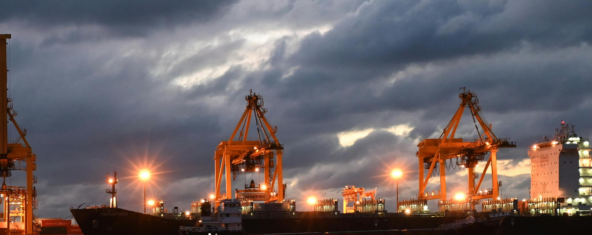Strategies, Tools & Talent for What’s Next! In our final session of the series, we’ll focus on setting your organization – and your career – up for success in the year ahead. We’ll discuss how compliance drives business impact, how…
Trade compliance has evolved. It’s no longer in your company’s best interest to check a box or avoid costly penalties. Trade compliance has become a central business function that directly impacts operational performance, supplier reliability, and cost management. Whether your role is to manage day-to-day classification work or advise the C-suite on risk exposure, you’re more essential than ever.
As global regulations continue to shift, trade professionals must stay ahead of emerging challenges like de minimis misuse, tariff classification shifts, and the nuances of origin rules. I wrote this to be your go-to guide, offering practical strategies, real-world examples, and expert insights that support both technical precision and strategic thinking.
Here’s what you’ll find in this guide:
- The most common compliance pitfalls and how to avoid them
- Best practices for risk management, reporting, and staying audit-ready
- High-impact tactics to boost the performance and visibility of your compliance program
Whether you're new to the field or a seasoned expert, you’ll find ideas here to sharpen your skills, enhance your impact, and position your team for success.
1. Future Readiness: Your Year-End Trade Compliance Checklist
Strong compliance doesn’t just start in Q1—it’s built on the groundwork you lay in Q4. A structured year-end review can uncover risk exposure, optimize trade operations, and set the stage for a successful year ahead.

Many companies miss key activities like updating tariff classifications and valuation databases, refreshing denied party screening lists, or ensuring Free Trade Agreement (FTA) certifications are current. Others skip critical steps like auditing documentation for accuracy or incorporating the latest de minimis thresholds into their systems.
Glossary at a Glance
What is a Free Trade Agreement?
An agreement between two or more countries where the countries agree on certain obligations that affect trade in goods and services, and protections for investors and intellectual property rights, among other topics.
With evolving regulations on the horizon, it’s also smart to review recent enforcement actions for risk patterns and adjust internal controls accordingly. For example, new country-of-origin rules or FTA changes may require updates to your supplier certifications and documentation standards.
To measure your team’s readiness, look at indicators like:
- Pass/fail rates from recent internal audits
- The average time to resolve compliance incidents
- Supplier compliance scores and responsiveness
- Voluntary disclosures or corrections filed
- Strong relationships with brokers and customs partners
- Active leadership buy-in
What to Include in Your Year-End Review
Bookmark our checklist for reviewing year-end trade compliance.
It’s a go-to resource for trade teams looking to start the new year with confidence.
2. Avoiding Operational & Legal Pitfalls
Operational shortcuts can create major legal liabilities, especially when it comes to de minimis misuse or Delivered Duty Paid (DDP) transactions. Knowing where risk lives (and how to get ahead of it) is critical for long-term compliance success.
Some of the most common causes of de minimis misuse include mis-declaring shipment values to avoid duties or structuring low-value shipments to exploit de minimis thresholds. Often, these issues stem from outdated training or manual processes. Proactive teams are automating value declarations and launching post-entry audits to catch discrepancies before they become liabilities.
Glossary at a Glance
What is the De Minimis Exemption?
The de minimis exemption—under 19 CFR 10.151—allows low-value shipments, currently under $800, to enter the U.S. duty-free.
On the enforcement side, agencies are getting sharper. They’re leveraging data analytics to identify suspicious trade patterns and cracking down with stricter penalties, especially for repeat offenders. Random DDP audits are also on the rise, so compliance teams need to be ready.
The early warning signs that your operations may be exposed are crucial to spot. Look for spikes in shipment holds, mismatches between declared and actual values, or suppliers hesitant to share documentation. One of our clients with similar challenges found success with our support. We helped them with:
- Reassessing risk controls
- Closing training gaps
- Using internal audits to steer through compliance challenges
3. Technical Mastery: Rules of Origin & Substantial Transformation
I know they may sound tedious, but rules of origin unlock serious cost savings and strategic advantages when used correctly. However, many professionals still confuse minimal assembly with substantial transformation or misapply tariff shift and value-added criteria.

To lower landed costs legally, companies are mapping their supply chains to maximize qualifying content, using tariff engineering to influence classification, and leveraging FTAs to reduce duties. But success depends on airtight documentation.
Glossary at a Glance
What are Rules of Origin?
Rules of origin are the criteria needed to determine the national source of a product. Their importance is derived from the fact that duties and restrictions in several cases depend upon the source of imports.
For audit-ready confidence, ensure you have:
- Certificates of origin
- Detailed bills of materials
- Clear manufacturing process documentation
- Supplier affidavits that support origin claims

If you’re looking to sharpen your approach, start by navigating the complexities of FTA Rules of Origin and taking a closer look at how substantial transformation and strategic tariff engineering can work in your favor.
Modern Trade Compliance Starts with You
Compliance leaders today are still managing risk, but they’re also driving growth, resilience, and trust across the business. If you're ready to enhance your internal controls, ensure regulatory confidence, and make compliance a real value driver, reach out for a compliance health check or talk to our consultants.
We’re here to help you lead with confidence.

Michael D. Easton, Presiden & General Manager
Michael D. Easton is a licensed customs broker and specializes in import/export compliance, export controls, and supply chain security. He is dedicated to developing sustainable compliance solutions and driving operational excellence for businesses of all sizes.



